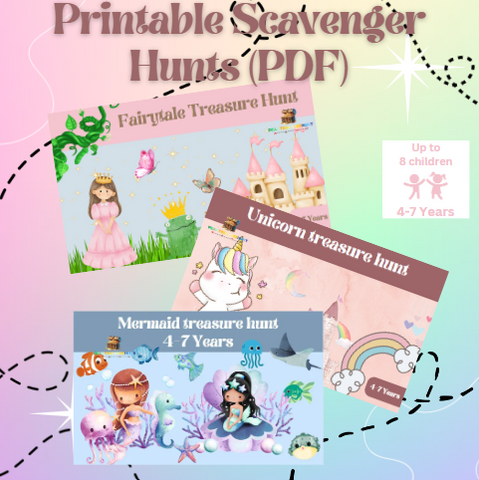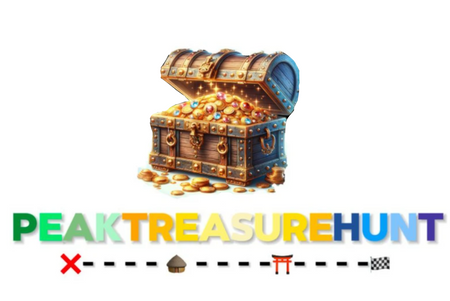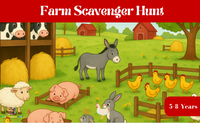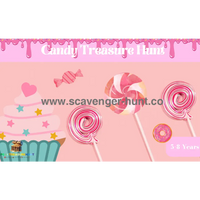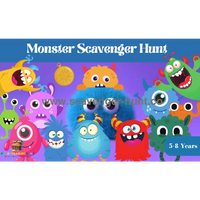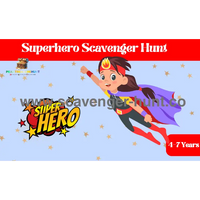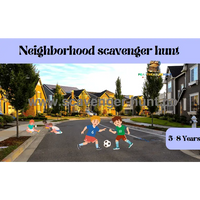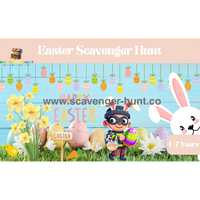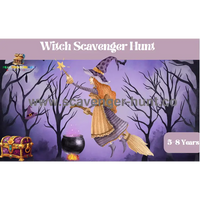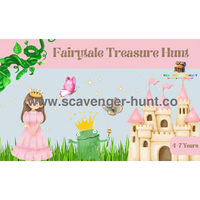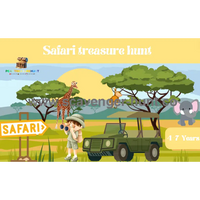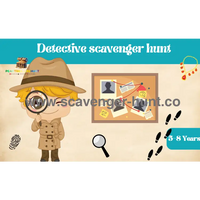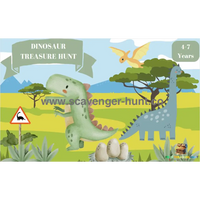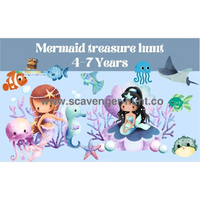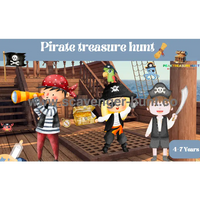🤮Fun and Gooey: Gross 'Would You Rather' Questions - Printable Cards
Dive into a world of giggles and "ewws" with our ultimate guide to Gross Would You Rather Questions. This playful game is more than just choosing between two silly or slightly yucky scenarios; it's a journey into the imagination, prompting laughter, critical thinking, and even a bit of learning along the way. Perfect for parties, family game nights, or a rainy afternoon, these printable "Would You Rather" cards bring a splash of fun and a dash of gross to any gathering. Ready to explore and create unforgettable moments? Let's squish into the gooey details!
Creating Your Gross 'Would You Rather' Cards
Embark on a creative journey to design the ultimate Gross Would You Rather cards that perfectly balance the gross with the giggle-inducing, ensuring every player, from the cautious to the daring, finds joy and laughter in the game. This chapter will guide you through the nuances of crafting questions that are just the right shade of gross, tips for bringing your cards to life, and ways to infuse them with personal touches that resonate with young adventurers.
Crafting Age-Appropriate "Gross" Questions
-
Understanding Your Audience: Tailor your questions to suit the age group you're designing for, keeping the "gross" factor fun and light-hearted. For younger children (ages 4-7), stick to simple, silly scenarios involving mud pies or funny, made-up creatures. Older kids (ages 8-12) might appreciate slightly more complex scenarios that can include harmless body functions or nature's oddities.
-
Balancing Gross and Hilarious: The best questions are those that prompt an "Eww!" followed by laughter. Think along the lines of "Would you rather have slime for hair or spaghetti for fingers?" The goal is to elicit smiles and giggles, not discomfort.
Designing and Printing Your Cards
-
Visual Appeal: Use bright colors and playful fonts to make your cards inviting. If you're artistically inclined, add funny illustrations or doodles that hint at the choices. For those less comfortable with drawing, free online resources offer a plethora of clip art that can add charm to your cards.
-
DIY Printing Tips: Print your cards on sturdy cardstock to ensure they withstand the excitement of game time. Laminating your cards can also protect them from spills or wear and tear, making them a lasting addition to family game nights.
-
Card Size and Format: Consider making your cards pocket-sized for easy handling by smaller hands. A standard size of 3x5 inches works well, allowing enough space for text and images while keeping the deck manageable.
Personalizing Cards for Your Little Adventurers
-
Incorporate Their Interests: Personalize cards with scenarios that reflect the interests of the children playing. For a bug-loving child, include questions about friendly insect encounters. For the young food critic, concoct dilemmas involving bizarre food combinations.
-
Involve Them in the Creation Process: Engage children in making the cards by asking them to come up with their own "Would You Rather" questions. This not only fuels their creativity but also ensures the game resonates with their sense of fun.
-
Create Special Edition Decks: For a birthday party or a special occasion, tailor a deck to the theme of the celebration. A Halloween-themed deck, for example, could feature mildly spooky scenarios that match the festive spirit.
Through thoughtful consideration of what tickles the funny bone without crossing into genuinely icky territory, combined with a dash of personalization and a sprinkle of design flair, you can create a set of "Gross Would You Rather Questions" cards that promise uproarious fun and endless entertainment for children. This blend of creativity, customization, and child-friendly humor guarantees that your cards will be a hit, sparking laughter and lively discussions at every play.

Setting Up the Game
Embarking on the adventure of a "Gross Would You Rather" game demands a bit of preparation to make sure the experience is enjoyable and memorable for everyone involved. From selecting the perfect environment to laying down the ground rules, every aspect contributes to the success of the game. Here’s how to set the stage for a session filled with laughter, learning, and lots of "eww" moments.
Choosing the Right Setting and Time
The setting plays a crucial role in enhancing the game's atmosphere. Whether it's a cozy living room floor, a backyard picnic, or a classroom, choosing a location where everyone feels comfortable and engaged is key. Consider a space that's conducive to group discussions and where laughter and chatter won't be a disturbance. Timing is equally important; a post-dinner family game night or a weekend afternoon are ideal times when everyone's relaxed and not rushed.
-
Indoor vs. Outdoor: Decide based on the weather, the size of your group, and the age of the children. Indoor settings work great for smaller groups or colder days, while outdoors adds an element of adventure on a sunny day.
-
Accessibility: Ensure the chosen spot is accessible for all participants, considering any mobility issues or space constraints.
Explaining the Rules to Kids and Ensuring Fair Play
Before diving into the game, take a moment to clearly explain the rules to the children. Emphasize that the game is about fun choices and there are no right or wrong answers. Encourage respect for each other's choices and remind them that it's okay to skip a question if they feel uncomfortable. Setting a positive tone from the start helps in maintaining a respectful and fair play environment throughout the game.
-
Simplicity is Key: Keep the rules simple and straightforward. For instance, each player takes turns answering, and everyone gets a chance to explain their choice if they wish.
-
Encourage Participation: Motivate shy or reluctant players by gently encouraging them to participate, but don’t force them. Sometimes, listening and laughing along can make them comfortable enough to join in later rounds.
Adapting the Game for Different Group Sizes
Whether you’re playing with just a couple of kids or a larger group, the game can be easily adapted to fit any group size. For smaller groups, consider allowing each child to answer every question to maximize participation. In larger groups, you could break into smaller teams or have a rotation system to ensure everyone gets a turn without the game dragging on too long.
-
Team Play: In larger settings, team play can encourage collaboration, as teammates discuss and agree on their collective answer before sharing it with the group.
-
Use of Props: For bigger groups, consider using a microphone or a speaking object (like a stuffed toy) that gets passed around to indicate whose turn it is to answer, adding a fun and organized element to the game dynamics.
Setting up the "Gross Would You Rather Questions" game with consideration for the environment, clear rules, and adaptability for group size ensures that the game is an enjoyable and inclusive activity. With a bit of preparation, you can create an engaging experience that fosters laughter, bonding, and memorable moments among children and participants of all ages.

Engaging and Educational Twists
Transforming a "Gross Would You Rather" game into an enriching learning experience is a clever way to combine fun with education, making each choice not just a moment of laughter but also a doorway to new knowledge. By weaving educational elements into the game, children can explore science, nature, and social perceptions in a playful context. Here's how to infuse the game with informative and thought-provoking twists.
Incorporating Fun Facts
Introduce fun facts related to the gross-out topics in your questions. For instance, after choosing between touching a slug or a worm, share an intriguing fact about the important role these creatures play in the ecosystem. This approach turns an initial "eww" reaction into a "wow" moment, encouraging a deeper appreciation for the natural world.
-
Fact Cards: Create separate cards or have a section on the "Would You Rather" cards dedicated to fun facts. After players make their choices, reveal the fact to add an educational twist.
-
Interactive Learning: Encourage kids to guess the fact before revealing it, turning it into a mini-quiz that further engages their curiosity and competitive spirit.
Facilitating Discussions on Perceptions of Grossness
Use the game as an opportunity to discuss why certain things are perceived as gross. Encourage children to share their thoughts on what makes something gross to them and explore cultural and personal differences in these perceptions. This discussion can lead to valuable lessons on respect, empathy, and understanding diverse viewpoints.
-
Open-Ended Questions: Ask open-ended questions like "Why do you think some people find this gross but others don't?" to stimulate conversation.
-
Personal Reflections: Allow space for children to express their feelings and reflections on their own reactions, fostering emotional intelligence and self-awareness.
Balancing Gross Questions with Curiosity-Driven Choices
While the gross factor is undoubtedly a hook for the game, balancing these questions with options that spark curiosity can enrich the experience. Present choices that, while still maintaining a light-hearted grossness, prompt children to wonder and ask questions. For instance, "Would you rather explore a cave filled with bats or a pond teeming with tadpoles?" can lead to discussions about habitats, animal behavior, and even fears.
-
Creative Scenarios: Craft questions that combine the gross-out factor with scenarios that require imagination and creative thinking. This not only entertains but also stimulates mental exploration.
-
Link to Real-World Exploration: Whenever possible, connect the scenarios to real-world activities or learning opportunities, such as visiting a nature center, starting a small garden, or watching a documentary on a related topic.
By integrating these engaging and educational twists into the "Gross Would You Rather" game, you transform what could be simply a game of choices into a multifaceted learning experience. Children are not only entertained but also invited to explore the world around them, question their perceptions, and gain knowledge in a fun, interactive way. This approach ensures that the game leaves a lasting impact, enriching young minds well beyond the initial laughter and gross-out moments.

Safety and Comfort Guidelines
Creating a safe and comfortable environment is essential for the enjoyment and engagement of all participants in a "Gross Would You Rather" game. This ensures that the experience is positive, fostering a space where children feel secure to express themselves without fear of judgment or discomfort. Here’s how to establish a framework that prioritizes the well-being and comfort of every player.
Setting Boundaries for Respect and Comfort Levels
Begin by establishing clear boundaries that respect each child's personal comfort levels. Explain that while the game revolves around fun and sometimes gross scenarios, everyone's feelings and responses should be respected. Emphasize the importance of not pressuring anyone to answer questions that make them feel uncomfortable and reassure participants that it's perfectly okay to pass on a question.
-
Open Conversation: Start the game with an open conversation about the importance of respect and listening to one another. This sets a precedent for the game's conduct.
-
Safe Words: Introduce a "safe word" or signal that any participant can use if they wish to skip a question without explanation, ensuring they feel in control of their participation.
Including Tips for Parents on Navigating Sensitive Topics
Provide parents with guidance on how to navigate the gross-out themes and sensitive topics that might arise during the game. Encourage them to engage in conversations with their children about the difference between game scenarios and real-life manners and behaviors.
-
Pre-Game Discussion: Suggest that parents have a pre-game chat with their children to discuss any apprehensions and to reinforce that the game is just for fun.
-
Post-Game Reflection: Recommend a post-game reflection to talk about what was learned and to clarify any misconceptions, ensuring the game remains a positive experience.
Encouraging an Inclusive and No-Teasing Environment
Foster an atmosphere where inclusivity is key, and teasing or making fun of others’ choices is not tolerated. Highlight the value in understanding and celebrating differences, showing that what may seem "gross" to one person can be interesting or perfectly normal to another.
-
Modeling Behavior: Adults and older participants should model inclusive behavior, demonstrating how to react positively and respectfully to all answers.
-
Positive Reinforcement: Recognize and praise inclusive and kind behavior among participants, reinforcing the idea that empathy and understanding are just as important as having fun.
By adhering to these safety and comfort guidelines, you can ensure that the "Gross Would You Rather Questions" game is a wholesome, enjoyable activity that respects the sensitivities and boundaries of all players. This careful consideration helps in creating an environment where children are free to be themselves, explore new ideas, and engage in healthy, respectful interactions, making the game not only entertaining but also a valuable learning experience.

Beyond the Game
The excitement and engagement of the "Gross Would You Rather Questions" game don't have to end when the last question is answered. By extending the themes and conversations into additional activities, you can enrich the experience, making the learning and fun last even longer. Here’s how to keep the spirit of discovery alive with activities that build on the game's gross-out fun and educational potential.
Creating a DIY Slime Recipe
A popular favorite among children, making DIY slime can be a fantastic hands-on activity that directly ties into any slime-related questions from the game. Not only is this a fun way to get messy in a controlled environment, but it also offers a basic lesson in science, teaching children about chemical reactions and the properties of different materials.
-
Science Connection: Use the slime-making activity to discuss states of matter, non-Newtonian fluids, and chemical safety.
-
Creative Expression: Encourage children to customize their slime with colors, glitter, or small beads, allowing for artistic expression.
Nature Walks to Explore the "Gross" Wonders of the Outdoors
Take the curiosity sparked by the game outdoors with a nature walk focused on exploring the "gross" aspects of nature. This can be a wonderful way to contextualize some of the game's scenarios in the real world, showing children the beauty and intrigue of the natural cycles and creatures they might typically find yucky.
-
Educational Exploration: Guide discussions on the ecological importance of decomposers, the role of insects in the environment, and how the "gross" elements of nature contribute to the ecosystem's health.
-
Sensory Learning: Encourage children to use all their senses to explore—listening for sounds, looking for animal tracks, or smelling different plants (where safe).
Art Projects to Draw or Craft Some of the Scenarios from the Game
Transforming some of the "Would You Rather Questions" scenarios into art projects can be a great way for children to process their thoughts and reactions to the game creatively. Whether it's drawing, painting, or building models, art allows children to express what they've learned and imagined during the game.
-
Creative Reflection: Offer prompts based on the game's questions for children to create their artworks, such as illustrating their chosen scenario or designing a new creature based on their answers.
-
Group Projects: Foster teamwork and collaboration by creating a collective art piece where each child contributes their vision based on a particularly memorable question from the game.
By integrating these activities into the post-game experience, you not only extend the fun but also deepen the educational impact, allowing children to explore science, nature, and art through the lens of their "Gross Would You Rather" adventures. These activities reinforce the game's themes in a tangible way, encouraging children to see the world around them with curiosity and an open mind, and proving that learning can indeed be messy, fun, and utterly fascinating.

Frequently Asked Questions
1. How can I ensure the questions are suitable for all children?
Keep the scenarios light and silly, avoiding anything that might be too unsettling. Stick to natural "gross" things like mud, slime, or funny animal habits.
2. Can this game help with my child's development?
Absolutely! It encourages decision-making, critical thinking, and can even expand their knowledge on various subjects in a fun way.
3. What if a child finds a question too gross?
It's important to respect each child's feelings. Offer an alternative question or let them pass and wait for the next round.
4. How many people can play 'Would You Rather'?
There's no limit! It can be played one-on-one, in small groups, or even in a classroom setting.
5. Are there any topics to avoid?
Yes, steer clear of topics related to personal hygiene, offensive material, or anything that might make children genuinely uncomfortable.

Summary
Gross Would You Rather Questions offer a delightful mix of humor, squirms, and learning opportunities, making them a hit among children aged 4 to 12. Through carefully crafted questions, this game encourages laughter, conversation, and a healthy curiosity about the world. With our guide to creating printable cards and engaging in educational twists, you're all set to host a game that's as entertaining as it is enlightening. So gather your little ones, hand out the cards, and get ready for a round of uproarious fun that's guaranteed to make your next family game night a gooey hit!
Gross Would You Rather Questions perfectly blend humor, squirms, and invaluable learning moments, captivating the hearts and minds of children aged 4 to 12. This unique game not only sparks bouts of laughter and lively discussions but also ignites a profound curiosity about the natural and scientific world. Our comprehensive guide has equipped you with everything you need to craft your own Printable Would You Rather Cards, complete with a variety of engaging and thought-provoking questions.
By introducing educational twists and follow-up activities, we've shown how this seemingly simple game can be transformed into a rich educational experience. Whether it's through DIY slime making, exploratory nature walks, or creative art projects, the possibilities for extending the fun and learning beyond the game are endless.
So, rally your eager participants, distribute the creatively designed cards, and dive into a game experience that promises not only a barrel of laughs but also a treasure trove of educational insights. Prepare yourself for an unforgettable family game night where fun meets learning in the most unexpected and gooey ways possible. Let the games begin, and may your next gathering be filled with joy, curiosity, and plenty of gross-out moments that bring everyone closer together.
Discover our complete Would You Rather Questions collection.
Discover our Complete Scavenger Hunts Collection.

